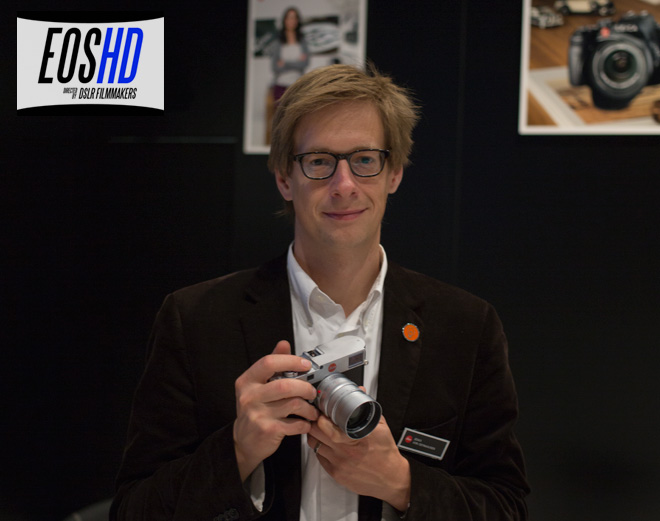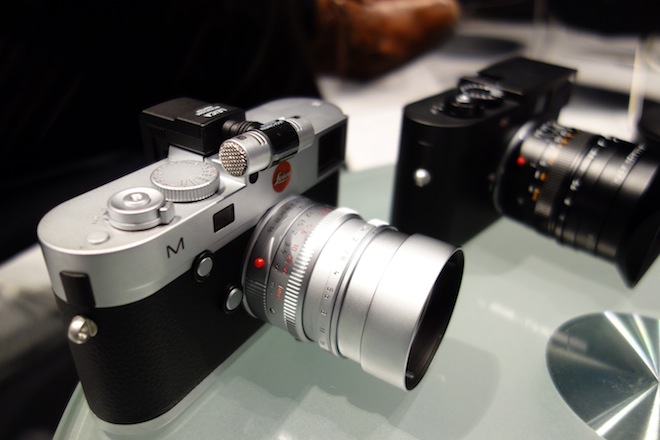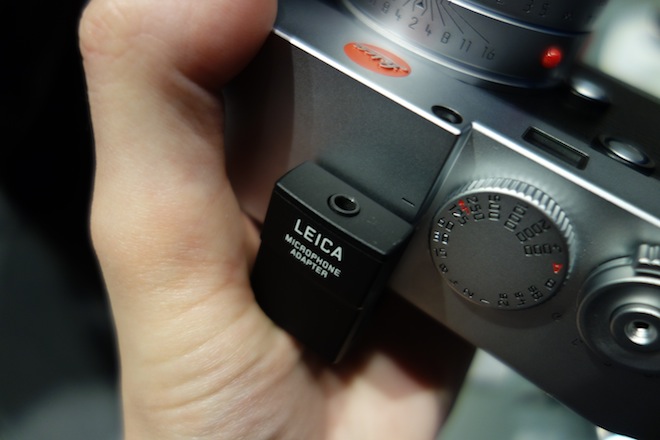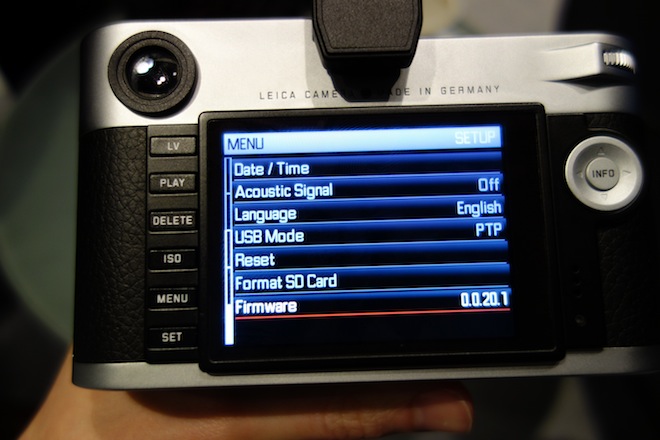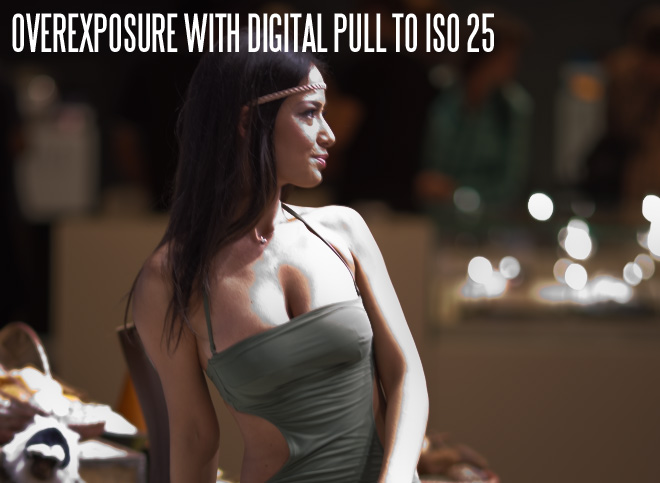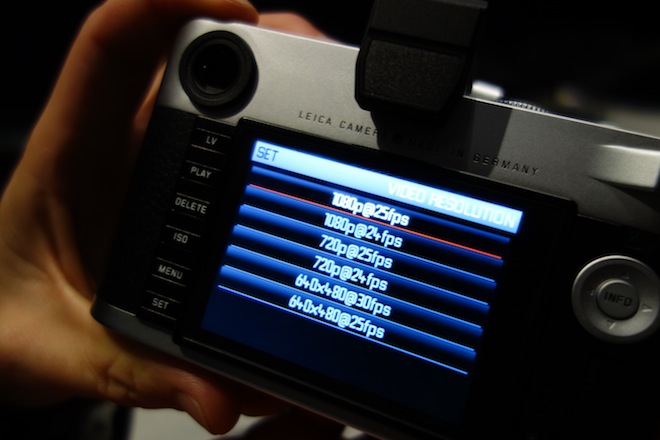Leica revealed their new M series camera at Photokina 2012. It marks the first time video has been implemented on a Leica M, with a brand new full frame 35mm CMOS sensor developed in Europe by CMOSIS.
EOSHD went along to interview Product Manager for the M-System Jesko Von Oeynhausen to find out what it means for filmmakers. Please note that the camera is at the moment a pre-production camera (firmware version 0.0.20.1) with an expected list price of €6200.
EOSHD: How did you come to be where you are now at Leica?
Jesko: I went from digital imaging R&D, then project management for the M9, then product manager for the M series.
EOSHD: Excellent, can I have your job? (Laughs) I’m a filmmaker and I make a lot of material on DSLRs, because I love the look of the larger sensor and it is all about bringing that stills photography look to cinema.
Jesko: Yes that’s the opportunity we’ve taken now with the Leica M, and an opportunity to use the Leica M glass for movies on a full frame sensor.
EOSHD: My first question is around the sensor size, I know before you were using a CCD sensor, and now it is a European made CMOS sensor (by CMOSIS). Was it optimised for both stills and video?
Jesko: Yes it is.
EOSHD: So I guess you are taking the video quality seriously, it is not just an add-on for live-view?
Jesko: It is really nice, we don’t publish the results yet but we start shooting early next year. The image quality tuning is the thing we do last, we start with calibrating and developing the electronics then you begin to optimise image quality on the digital side. This has not yet been done but we know how it looks today, especially high ISO quality is so promising.
Above: the new Leica M alongside the Leica M Monochrom
EOSHD: What is the megapixel count?
Jesko: 24MP
EOSHD: I guess to scale 24MP down to 2MP for 1080p – can you tell me how the sensor is read out?
Jesko: To scale 24MP down to 2MP for 1080p we do not just line-skipping, we average pixels. It is not pixel binning or anything like that.
EOSHD: Because the Canon and Sony DSLRs line-skip, sometimes that results in a moire pattern on very fine patterns. I’m curious to see if the moire and aliasing is fixed on the Leica M, just like looking at a photo.
Jesko: From today’s experience it seems very uncritical for moire, of course we don’t have an anti-aliasing filter on the sensor because we always want to have the highest sharpness for stills, but I didn’t see it very often on the videos I’ve taken.
EOSHD: On the 5D Mark III, that uses a very strong anti-aliasing filter. I took it out but it didn’t make much difference! My next question is – does the camera have full manual control in video mode?
Jesko: Yes. We have a shutter speed dial for still photography but you can use it for video too. Our intention is to give the videographer the most control possible. ISO of course you can only choose it manually in video, up to ISO 6400.
EOSHD: Does it have an HDMI output?
Jesko: No it doesn’t, we have an EVF connection but because of that we can’t have an additional HDMI output for technical reasons.
EOSHD: This may be an issue with professional filmmaking (to use a monitor)…
Jesko: Yes that is one thing which isn’t perfect, you are right.
EOSHD: Does it use a rolling shutter to expose in video mode?
Jesko: Yes we have that, what I have heard back from professionals is that the rolling shutter effect is not too bad.
EOSHD: All the cameras have this anyway so it shouldn’t be a priority to fix yet. It is very impractical to fix on a small camera – the battery would have to be huge, enormous heat skink around the sensor, etc. What is the maximum recording time?
Jesko: We’re limited to 4GB file sizes for file format (FAT) reasons.
EOSHD: And that is also due to the European tax issue?
Jesko: Yes that is true (29 minutes)
EOSHD: What is the bitrate of the codec and is it 4-2-2 or 4-2-0?
Jesko: We will definitely do 4:2:2 subsampling. About the bitrate we are at around 40 Mbs at the moment, which is running quite good. We will try to go up now and see how far we can go.
EOSHD: [Holds camera]. What a beautiful object. Compared to example the Canon C300 which is a professional cinema camera that retails at 12,000 Euros, this is half the price but twice as beautiful (laughs). Ah you have peaking!
Jesko: Yes we have peaking! [To check focus on the live view display] you can zoom-in with the thumbwheel, with two steps – you also have focus peaking whilst zooming in so you can focus very precisely.
EOSHD: Does it simulate exposure in live view?
Jesko: Yes whilst you half-press the shutter and during video recording, the exposure simulation remains ‘live’.
EOSHD: I see you have ‘pull-100’ in the ISO menu…
Jesko: The basic ISO is 200. ISO 100 is of course with a small loss of dynamic range
EOSHD: That’s actually quite a useful feature for filmmakers, as it acts like a digital ND filter… Would it be possible to put in very low ISOs like ISO 25?
Jesko: We don’t usually want to do that because the loss (of dynamic range) is usually too much. But it would be easy to do. But blown highlights just really don’t look good.
EOSHD: So it would be quite a steep drop off to highlights at ISO 25?
Jesko: What you do when you have a pull ISO you’re just over exposing, with a pull 50 you would be 2 stops over, so 2 stops less latitude. This is not good!
To illustrate this problem here’s an over exposed raw file shot on my 5D Mark III with full highlight recovery and digital pull, indeed the highlights are a problem. So very low ISOs are not the solution for the fabled digital ND feature.
EOSHD: I know there was a company that developed a material, when a voltage was applied to it it regulated the light like a digital ND.
Jesko: Like an LCD!
EOSHD: Yes, and I was talking to Sony about their ND filter in the FS700 they needed to develop a new material thin enough and good quality enough not to compromise the optics. My next question – is the memory card slot under the base? Might it be possible to put it in the top plate?
Jesko: There’s a lot of optics in there! It is a good solution to have a solid solution, closed and stable (under the base) – we thought about having doors but they would look cheap and could break. Doing a door in Leica quality would be very very expensive.
EOSHD: And for sound, does it have a microphone socket?
Jesko: We have a microphone adapter (3.5mm) which fits into the EVF socket. Of course there’s a built in mono microphone, for stereo recording we recommend the adapter and Leica stereo mic. You can use any external professional solutions (via the 3.5mm socket).
EOSHD: Do you get any manual control of gain, levels?
Jesko: Yes you can have standard AGC or you can control it up and down, and see the peaks. And whilst you are recording you can adjust it and see the levels (on the live view display).
EOSHD: I see it is 24/25p switchable, that is good. There’s no 60p though is there? Do you know if MJPEG is i-frame on the Leica M?
Jesko: No to 60p – the image processor is not powerful enough. Yes to i-frame (ALL-I).
Above: The camera offers cinematic frame rates in 1080/720p – and is a world-cam meaning it supports both 24p and 25p.
EOSHD: There’s a coding on modern Leica M lenses for vignetting, is that compensation done in video mode on the new Leica M?
Jesko: I cannot answer this question yet sorry.
EOSHD: Is there a dedicated video button?
Jesko: There’s a dedicated video record button (marked ‘M’ next to main shutter button). The main focus is still on stills photography but for me as a user I know have video, so it is great to have it when I need it in one camera.
EOSHD: The stealth factor is very important to me.
Jesko: Well imagine with the Leica M – you can turn off live view and look through the optical viewfinder with the frame guides and record video, nobody will think you are shooting a video.
EOSHD: Thank you Jesko for the interview!
Summary
Although Leica’s focus is of course stills photography, there are notable features on the Leica M which numerous rivals don’t have in their video modes. The camera is notable in that it records 4-2-2, MJPEG ALL-I (at higher bitrates than AVCHD), peaking, manual audio control with on-screen levels and most promisingly pixel averaging to scale the sensor to 1080p
This is great to see and although the lack of an HDMI output for monitoring may be a problem for some filmmakers, Leica will be offering their own small EVF (although using the mic adapter and EVF at the same time is likely not possible since they share the same hot-shoe proprietary connector).
In my view, if the scaling of the sensor and the 4-2-2 codec stand up well in the final camera, this could give the highest video quality of any full frame camera currently available. I saw the results from the Sony NEX VG900 and A99 at Photokina, and sadly they just don’t stand up – far too much false colour, moire and aliasing from line skipping.
With features like these Leica seem to be taking a well thought out approach to the core components of a good video mode and a serious approach to video quality on the new Leica M.



